

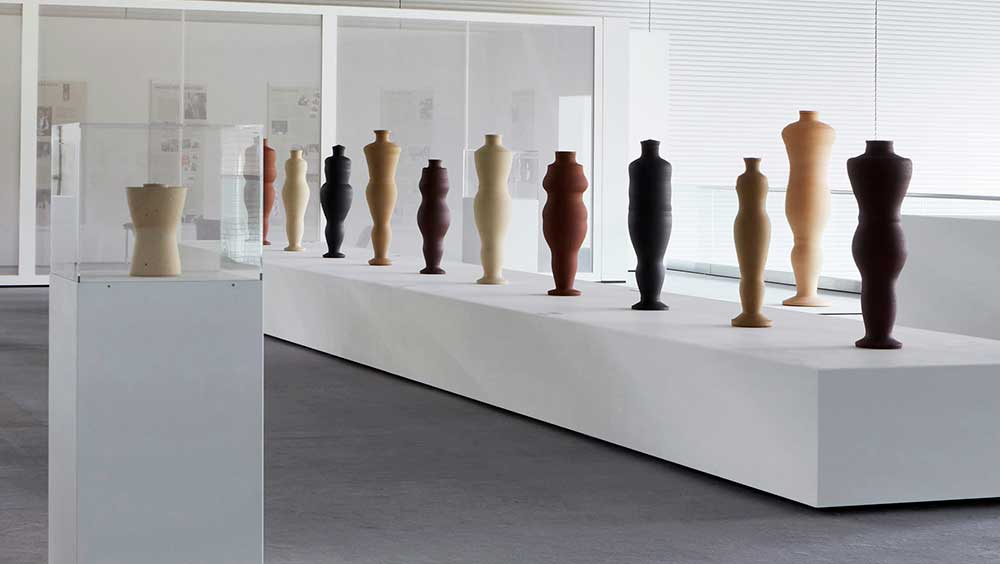
Installation view of Julian Stair: Art, Death and the Afterlife, Sainsbury Centre, University of East Anglia, Norwich. Photo: Jan Baldwin.
Sainsbury Centre, University of East Anglia, Norwich
18 March – 17 September 2023
by BETH WILLIAMSON
This exhibition of new work by the ceramic artist Julian Stair was made in response to the pandemic, his way of acknowledging the daily reporting of deaths as something more significant than mere numbers. The works reference the human body, inviting viewers to reflect on the relationship between the body and the vessel. From monumental figural forms to smaller vessels containing human ashes in the clay, or cinerary jars to hold ashes, they are commemorative and comforting. Alongside Stair’s compassionate clay containers is his sensitive selection of objects from the Sainsbury Centre Collection from ancient to modern.
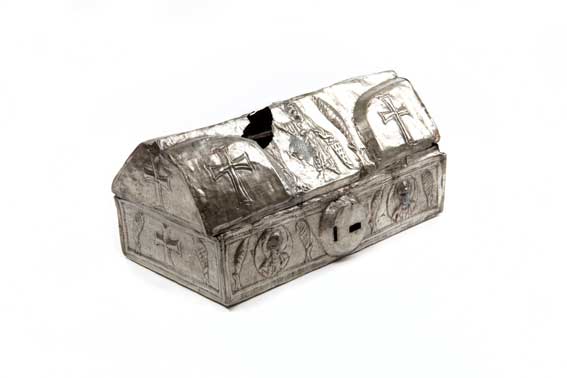
Reliquary with hinged lid, 500–600 CE, silver, Byzantine Empire, Byzantium, Sainsbury Centre Collection.
There are ancient Cycladic marble figures, a divination cup from Nigeria (1850-1950), an Ecuadorian vessel (800-1500), a Tang dynasty jar (618-90), a Byzantine reliquary (c500-c600), 20th-century drawings by Alberto Giacometti, a Zapotec funerary urn from Mexico (200-900) and much more besides. These objects from across time and space bring the rich context of humanity’s engagement with death, through art, to the fore. Stair’s contemporary ceramics are part of this important context.
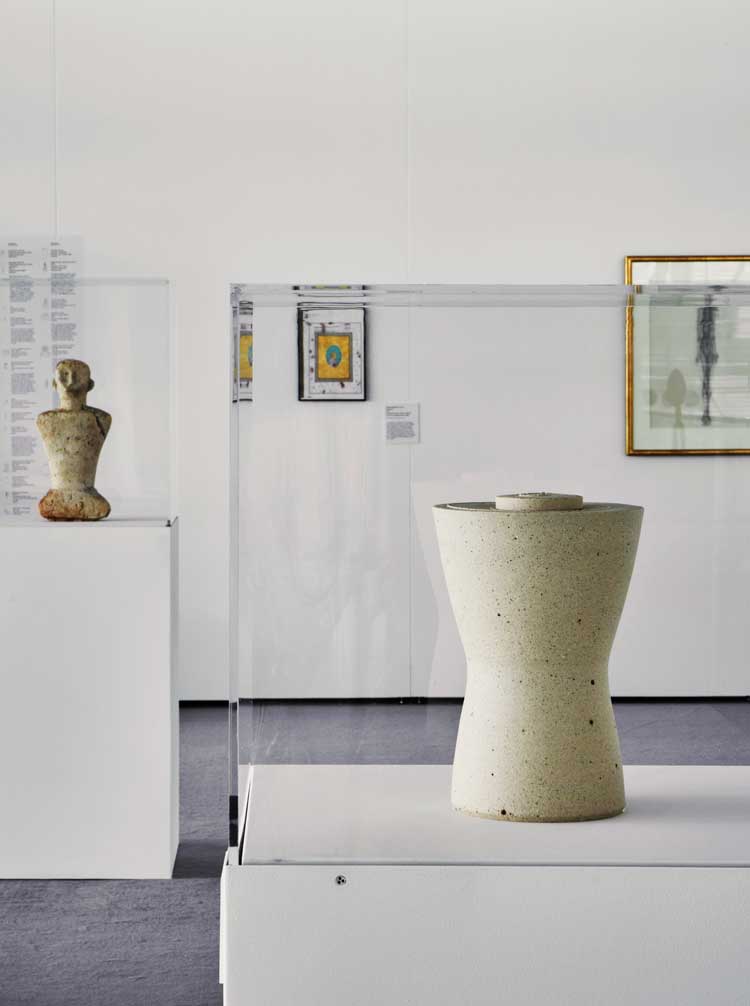
Installation view of Julian Stair: Art, Death and the Afterlife, Sainsbury Centre, University of East Anglia, Norwich. Photo: Jan Baldwin.
For Stair, death is not just something to be memorialised, it needs to be discussed and talked about, and thought about before and after it occurs. He is therefore active in facilitating a number of “death cafes” at the Sainsbury Centre as a way of bringing people together – members of the community and those involved in end-of-life care. It is, perhaps, an unusual move for an artist, and the Sainsbury Centre, to host such events. But if you consider the fundamental point that art and death are both part of life, then maybe it is entirely apposite for these events to taking place here alongside works of art that attend to the inevitable matter of death. Stair speaks with great care and consideration about the vessels he has made and the individuals some of them commemorate.
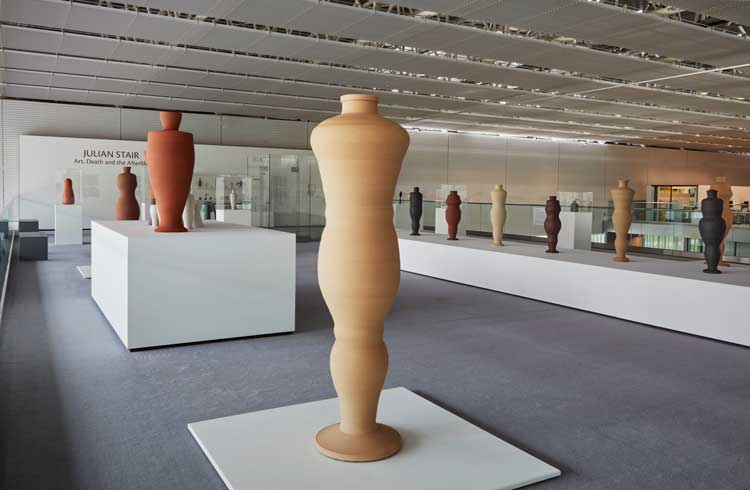
Installation view of Julian Stair: Art, Death and the Afterlife, Sainsbury Centre, University of East Anglia, Norwich. Photo: Jan Baldwin.
Over the past decade or two, Stair has made cinerary jars and other memorial-based work for individuals. As he explained in 2013, the significant thing for him is the kinaesthetic relationship between the vessel and the body, an exchange. He wanted to make objects that had a bearing on how we deal with death and the obvious thing was to make cinerary jars for the cremated body. His Reliquary for a Common Man (2012), made for a family member, was the first to incorporate human ashes in to the clay body of the vessel. This formed part of his Quietus project, shown across several location in 2012 and 2013. As he said at the time: “This is the idea of art engaging with life – if these objects can help to mediate and shape something as profound as a passing of a life, and help those left behind – because, in my view, it is really to help those people left behind. If art can do that through music and through words, then we should be doing that through objects – through material culture. That was a motivation and a very early prompt in thinking about Quietus”.1 Things didn’t stop at cinerary jars for Stair. He shifted scale and form. He made the cinerary jars, but he also made the sarcophagus, the figural, monumental and crouch jars, each representing different symbolic response to death.
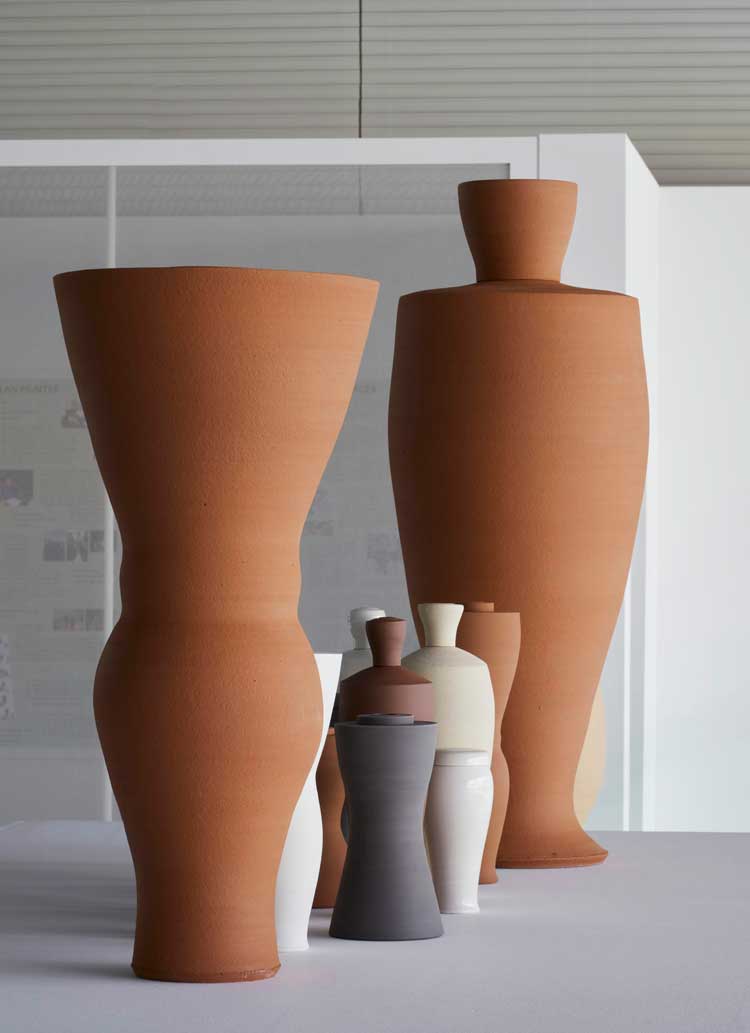
Installation view of Julian Stair: Art, Death and the Afterlife, Sainsbury Centre, University of East Anglia, Norwich. Photo: Jan Baldwin.
This exhibition shifts in scale and form, too, as a collection of monumental figural jars forms a line through the centre of the exhibition. To one side of the gallery space, a raised platform supports a group of vessels of various sizes that give the sense of people huddled together for comfort. Elsewhere, single jars and pots are dotted around the space. Their raw materiality and their approximation to the human figure is palpable. Everywhere visitors move around the space quietly and with a degree of reverence and respect for the dead. They elicit an immense desire to touch, something that Stair has recognises in his work.
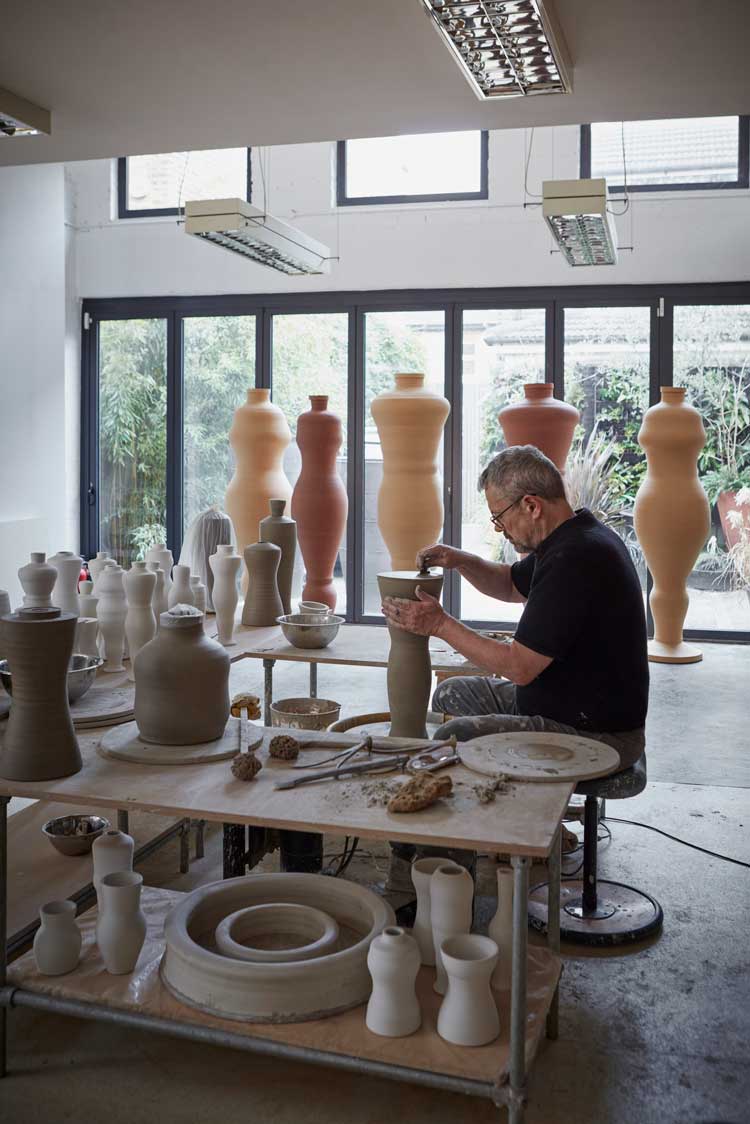
Julian Stair making Cinerary Jars. Photo: Jan Baldwin.
The artist knows the embodied cinerary jars in this exhibition by name, that is, by the name of the person they commemorate. In each case, the artist spent time with the families of these people, finding out about them, what characteristics were remembered. Alan, also known as Embodied Cinerary Jar Memorial to Alan Hunter (2023) is the only jar that Stair has glazed, because Hunter was a glazier. Laurie, or Embodied Cinerary Jar Memorial to Laurie Rainger (2023), perfectly reflects the remembered physical characteristics of the man – he was tall, slim, with good shoulders and you can see that in this jar. Another jar, a Memorial to John and Ann Withers (2023) is made from Etruria marl clay, its colour and texture echoing that of the earth since John was a farmer. There are memorial cinerary jars for many others here including Simon Bardwell, Pamela Baird, Susan Faith and Mike Ferris. These may not be well-known names but since they are memorialised in this exhibition, it seems important to name them here. In each case, Stair uses the characteristics of the jar (scale, proportion, material) to evoke the presence of the deceased. These are beautiful, thought-provoking, emotive and tactile. Working closely with bereaved families is surely difficult work, but Stair has brought materiality to bear in the most thoughtful of ways. These embodied cinerary jars will be returned to their families after the exhibition. For now, however, they in some sense share the space of the Sainsbury Centre with their forebears. They also share it with visitors who may feel supported in their own reflections on life and loss.
Reference
1. Quoted in Julian Stair: Quietus reviewed. Archaeology of an exhibition by Michael Tooby, published by Wunderkammer Press, 2013, page 16.